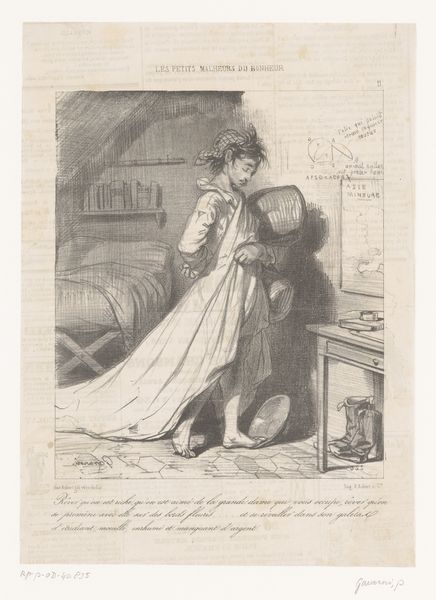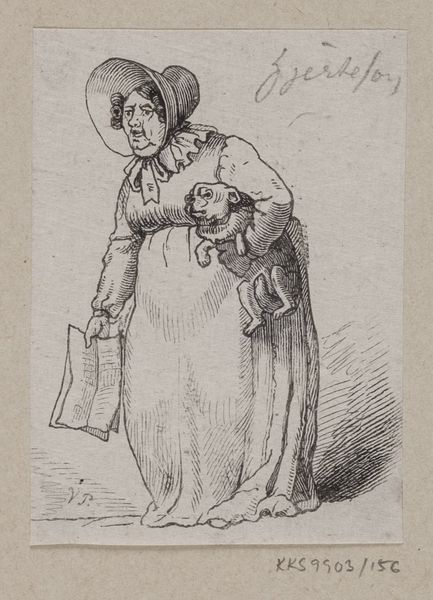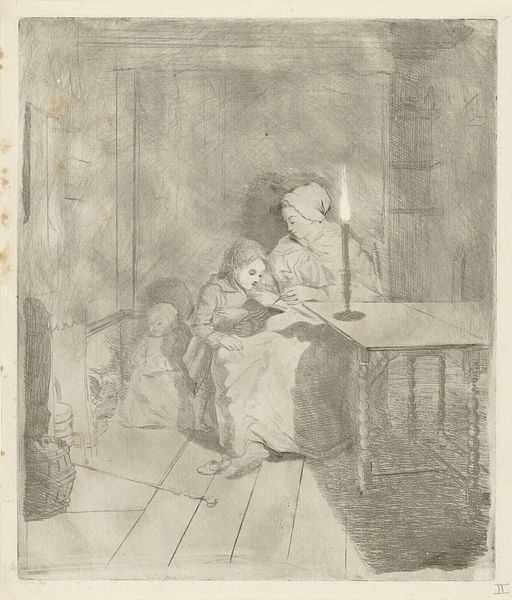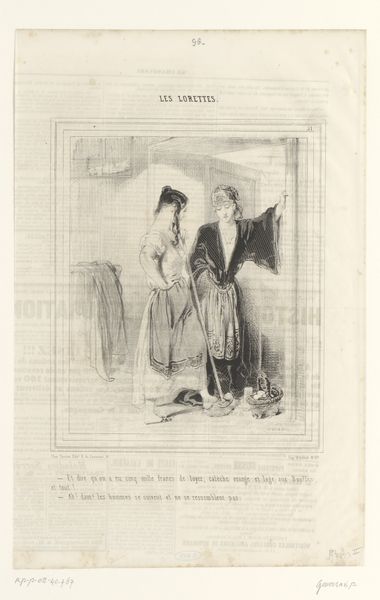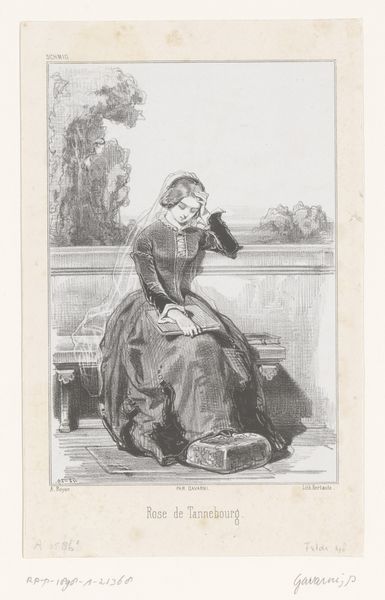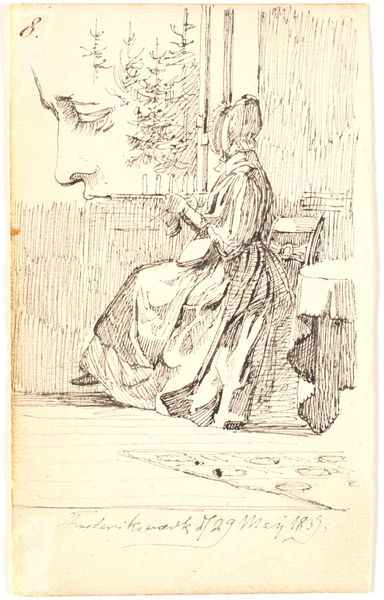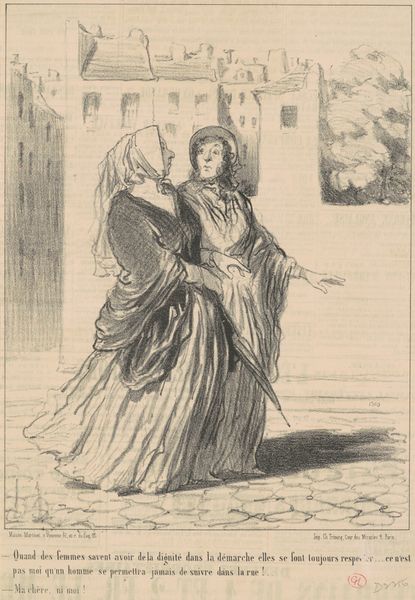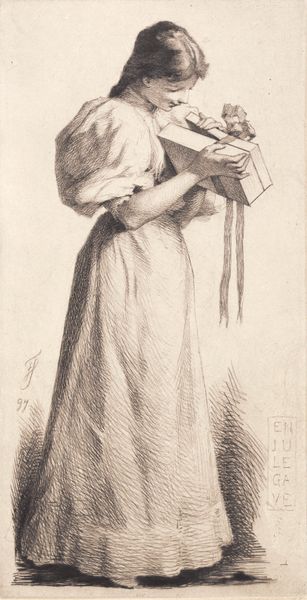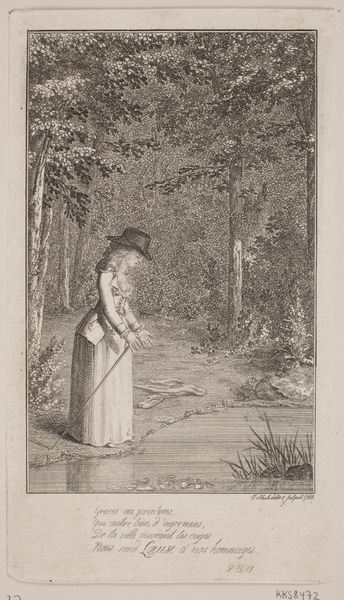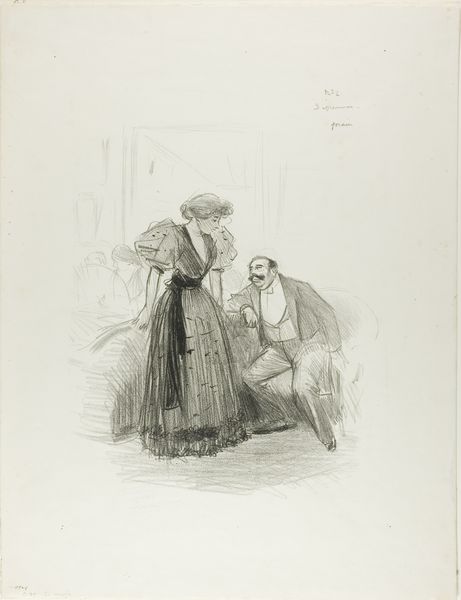
drawing, lithograph, print, paper, pen
#
drawing
#
lithograph
# print
#
paper
#
pen
#
genre-painting
#
realism
Copyright: National Gallery of Art: CC0 1.0
Honore Daumier created this lithograph, La Glaneuse, during a time of rapid social and economic change in France. It depicts a woman, a gleaner, scavenging for leftover crops after the harvest. Daumier cleverly critiques the social structures of 19th-century France, highlighting the stark contrast between the wealthy and the impoverished. Note the way the gleaner is positioned against the backdrop of a public park, with a classical statue in the distance. Daumier uses visual codes to draw attention to the inequalities of urban life, suggesting that the classical ideals of beauty and order are built on the backs of the working class. The lithograph's publication in a popular journal indicates its intent to engage with contemporary social issues. To better understand the impact of Daumier's work, explore archives of French periodicals from the period and delve into studies of class and urban development in 19th-century Paris. By examining such resources, we can gain a deeper understanding of the social and institutional context that shaped Daumier's art.
Comments
No comments
Be the first to comment and join the conversation on the ultimate creative platform.
